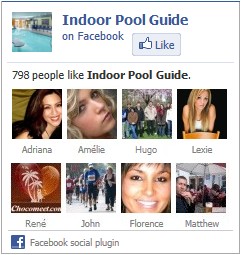
Coagulants enhance the removal of dissolved, colloidal or suspended material by bringing it out of solution or suspension as solids (coagulation). These solids then clump together (flocculation), producing a floc, which is more easily trapped in a filter.
Coagulants will be less effective where pH values are above the recommended operating range. A minimum alkalinity of about 75 ppm as calcium carbonate (CaCO3) is required for effective flocculation. Operators should follow the manufacturer’s recommendations for the use of a particular product to achieve best results.
Ozone Treatment
Ozone treatment breaks down colloids and encourages microflocculation. A coagulant may not be needed. Certainly, if the water is turbid, dull or not sparkling, alum (aluminium sulphate), or PAC (poly-aluminium chloride or aluminium hydroxychloride) can be used.
Dosing Coagulants and Flocculants
Dosing can be by means of chemical dosing pumps or by manual hand dosing. Where they are dosed continuously, the pumps must be capable of accurately dosing the small quantities required.
Within a swimming pool circulation system, it is important that coagulants do not build up or reach the pool in any appreciable concentration. It is also important that the gelatinous floc does not impair filtration by creating blockage. This can be achieved by applying the correct dosage rates and by frequent backwashing, which also contributes to dilution. Increases in pH should also be avoided to prevent the coagulant from disassociating and returning to the pool.
Injection
The injection point should ensure that coagulant mixes well with the circulation water before the water reaches the filter media. Injection points should also be located well away from sampling points for chlorine residual, pH value or ORP determinations. Contamination of the sensors by the localised high concentrations may give a false picture of water quality and adversely affect the sensors themselves. For safety reasons, they should also be sited away from other chemical dosing points.
Backwashing
Reversing the flow of pool water back through the filters (to flush the trapped material to waste) is essential in caring for the filters and maintaining water quality. It should be conducted whenever
the differential between the filter inlet pressure and the filter outlet pressure reaches the level identified by the filter manufacturer.
Backwashing should be conducted from daily to weekly, depending on bathing load. If users are present at this time, care must be taken not to significantly reduce the depth of the water in the pool. Consideration should also be given to the effect cold make-up water may have on pool users. This may be of particular significance for people with disabilities, pre-school swim lessons and hydrotherapy pool operators. Therefore, it is advisable to schedule backwash for the end of day.
Period
The various filter types may differ in backwash duration. The duration recommended by the manufacturer may only seem to clean the filter. However, a viewing window or clear sight glass on the backwash discharge pipe is the only way to positively check progress. It should be possible to observe the clarity of the effluent water throughout the period of filter backwash. Ideally, backwashing should continue until the backwash water is clear. After backwashing, there should be a brief pause before normal flow is restarted— this will allow the expanded filter bed to settle. Some backwash systems have a rinse cycle for this purpose.
Flow
The backwash flow must be fast enough to expand the media bed without losing any media to waste, so the manufacturer’s recommendations are critical. Air scouring heavy filter beds first can help separate the media particles and coagulated material, thereby increasing the efficiency of backwash. A viewing window to show the top of the media bed will allow operators to check that correct expansion is achieved. Backwash flow rates should not be so high that the bed expands beyond the overflow level, resulting in loss of filter media to waste. The backwash water pipe must be large enough to discharge the wastewater without a build-up of pressure inside the filter tank. The pump(s) must therefore be able to supply the correct amount of water for the correct amount of time, to achieve effective backwash.
Discharge
Backwash water must be discharged according to the requirements of the local water authorities and the Environment Protection Authority. The volume, quality and frequency of the backwash water discharge may be regulated.
Maintenance
A word of caution: it was common practice in filter construction prior to 1970 to use asbestos. This includes pressure sand as well as vacuum sand (gravity fed) filters. Accordingly, any remedial work will need to be conducted by experts in this area.
Filters should be opened up and inspected internally at least once per year by an expert, familiar with the problems that can arise. This means attention to sand quality/quantity, collector condition, corrosion and structural integrity. Any unusual signs— fissures, an uneven bed, mud balling and channelling—need investigation. Changing filter media is periodically required and depends upon a range of factors including:
• Pool volume
• Turnover
• Pool water temperature
• Bather load
• Water balance
• Cleaning regime
• Location (indoor/outdoor)
• Type of filter media
• Type of filter.
Professional advice may be required to assist with decisions to replace filter media.

